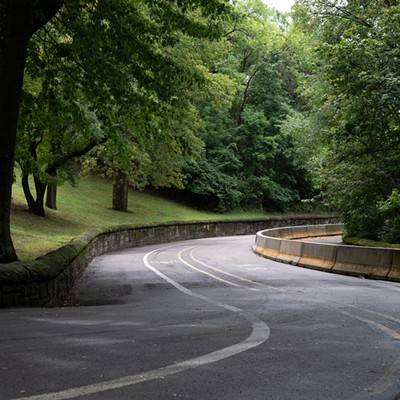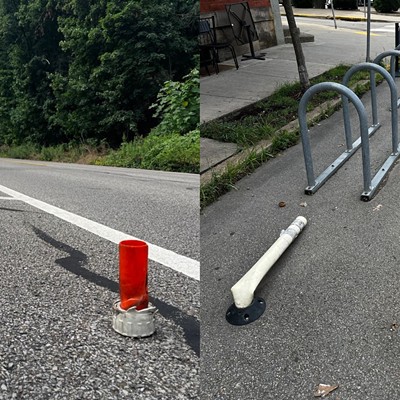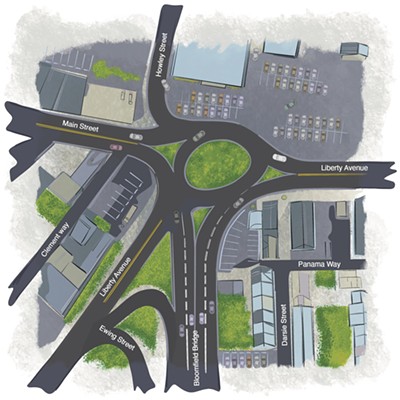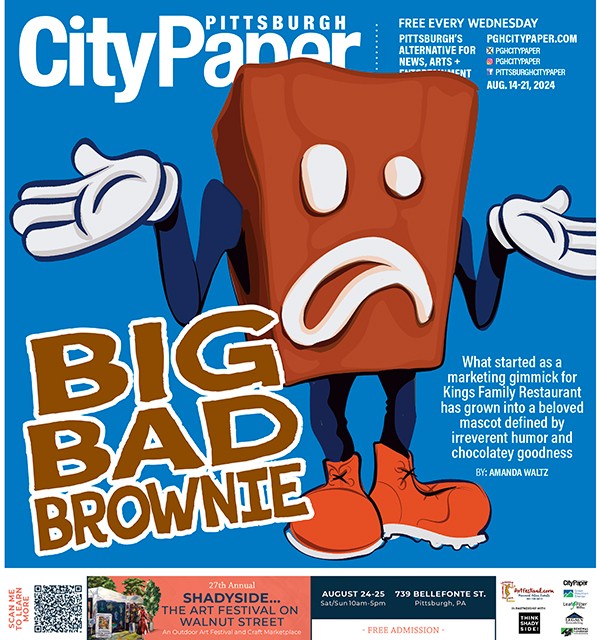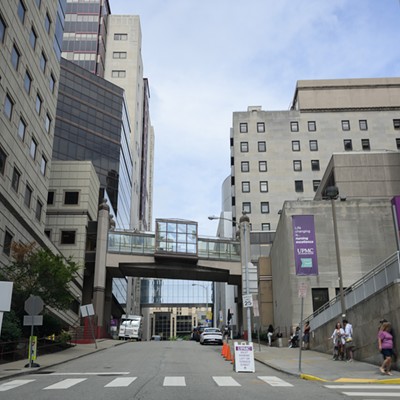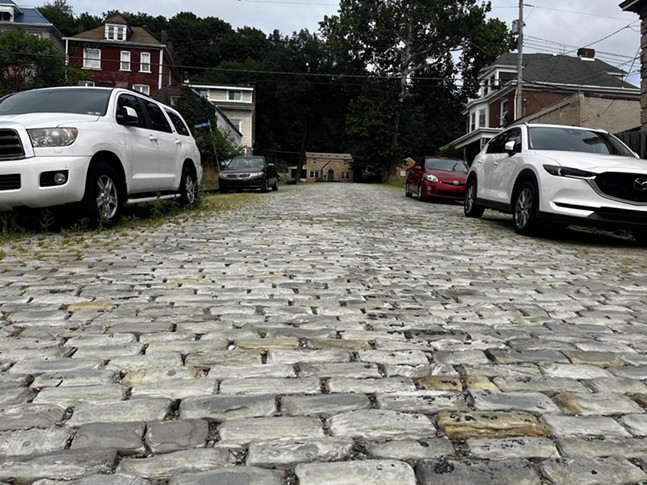
Pittsburgh already has miles of permeable pavement along our roadways. The problem is that most of it is buried beneath asphalt.
Before cars ruled, Pittsburgh was largely paved with Belgian block. Also called setts, these 35-pound pavers are extraordinarily durable. Though Pittsburgh also has many brick streets and even one paved with wood, Belgian block is less susceptible to freezing and thawing cycles than these other sustainable options. Belgian block streets can also handle relatively high volumes of traffic without cracking, and, depending on how they are laid, absorb rainwater without losing structural integrity.
Belgian block’s longevity is borne out by their frequent reappearance when potholes appear in asphalt and concrete roads or when the city repaves older streets. Sometimes, they’ll even peek out from between old trolley tracks in a testament to transit days gone by. The first time I noticed this, I immediately wondered: why isn’t the city re-exposing more of these streets?
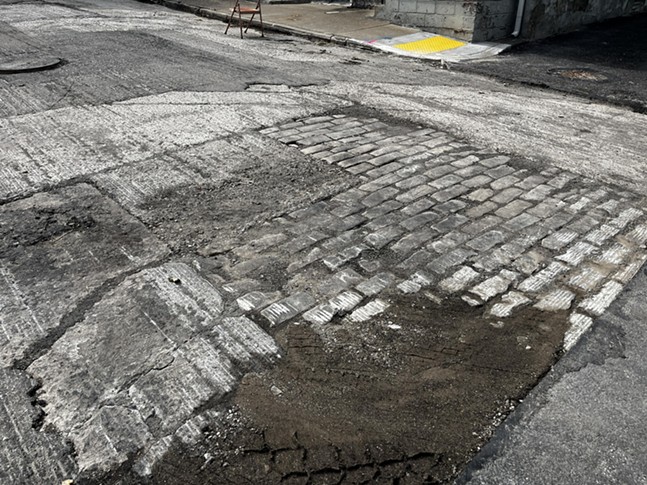
Importantly, the spaces between these stones admit water. If paving stones are laid on and packed with crushed lime or sand, water can freely flow through the cracks and seep back into the water table. Here in Pittsburgh, that means less water flowing into our combined sewer system and raising the risk of raw sewage flowing into the rivers.
Stone streets could marginally cut down on both carbon emissions and maintenance costs over the longer term. Asphalt is a petroleum byproduct that sometimes includes harmful ingredients, and concrete is basically just as bad. Pittsburgh weather means both surfaces expand, contract, and eventually need to be patched and replaced. Cobblestones, meanwhile, need only be taken up and re-laid as long as the individual pavers are intact.
Belgian block is also a natural traffic calmer, working similarly to rumble strips along a shoulder. Most of Pittsburgh’s extant stone streets are residential, aka located in zones where neighbors are unlikely to want people flying by at 45 mph. Exposing and restoring more of these streets would confer the above benefits while keeping traffic at more reasonable speeds without necessarily requiring speed humps or additional calming measures.
The disadvantages? Stone streets aren’t ideal for cycling, though Europe long ago figured this out by using smaller cobbles along dedicated urban bikeways. Granite can also be slicker in the wintertime and harder to plow when it snows (there’s a further argument to be made here for sand vs. salt, but I’ll save that for another day). Stone would make less sense along a high-volume road such as Bigelow Blvd. regardless.
But it would make sense along the many narrow residential streets where, in many cases, the Belgian block already sits mere inches below the wheels and heels of Pittsburgh traffic. In those instances, exposing it would once again allow rain to seep naturally into the ground, playing children to hear cars — electric or gas — long before they approach, and local residents to enjoy the old-world charm of a street made from 150-year-old granite blocks. Need a lead line replaced or a water main fixed? Easy! Utility companies can just take up the old stones and put them back when they’re done.
The further we advance as a society, the more we rediscover that time-honored natural materials like stone and wood were the best choices all along. I, for one, would love to rumble slowly along more cobblestones as I explore the city — even better would be doing so from the saddle of a subsidized e-bike…


